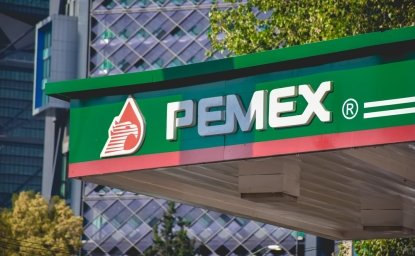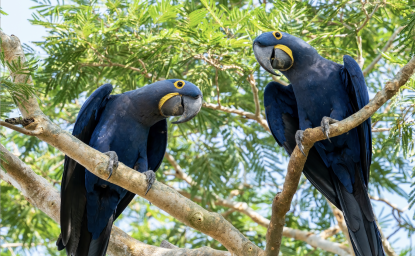La Familia Michoacána emerged in the wake of a battle for control of Michoacán between the Gulf organization and a group known as "El Milenio." The Gulf organization had used its armed wing, the Zetas, to oust rivals from the state, and the Zetas had trained members of La Familia to assist them in this endeavor. Eventually the increase in the amount of methamphetamine distribution within the state, as well as, growing frustration with Los Zetas, who oversaw the Gulf organization's operations in Michoacán, created a tense atmosphere. La Familia chose to challenge the Zetas' control in 2006, succeeding in pushing both the Gulf and the Zetas organizations from the state, establishing themselves as bitter rivals. In the aftermath of this fracture, La Familia formed an alliance with the Sinaloa organization.
The violence became gruesome and public when in a brazen show of force, La Famila threw several decapitated heads into the middle of a crowded club called Sol y Sombra. These events, along with other violent acts which occurred as the battle raged between various OCGs, prompted newly inaugurated President Felipe Calderon to deploy army and federal police forces into the state of Michoacán to confront the criminal organizations.
La Familia is also known for its cultish mystique based on a quasi-Christian fundamentalist ideology, which was mandated for all members by the highest levels of the organization's leadership, including the now-defunct Nazario Moreno González, also known as "El Chayo" or "El Mas Loco". Moreno González is reported to have written several religious volumes, and required foot soldiers in La Familia to carry bibles and conduct prayer sessions before work.
La Familia first emerged in the 980s gained as an anti-crime and vigilante group. They were eventually absorbed into the Gulf and Zeta partnership when the Gulf organization used the Zetas to push a rival organization (the Milenio) out of Michoacán. Although La Familia is now Mexico's largest producer and exporter of methamphetamines, in its early days it unwaveringly opposed the use of narcotics. Yet over time, La Familia deepened its roots in the fertile mountainous region of the Sierra Madre del Sur, where they have developed the infrastructure and capacity to produce crystal meth, marijuana, cocaine, and opium poppy plants.
La Familia's shift in business model from vigilante group to trafficking organization occurred after a series of domestic U.S. law enforcement efforts to combat the production and sale of methamphetamines. Chief among these was the United States Congress' decision to crack down on over-the-counter sales of pseudoephedrine, an essential component in the production of methamphetamines. According to the National Methamphetamine Threat Assessment, released by the National Drug Intelligence Center in 2008, meth is most pervasive in the Midwest where it is a challenge to local law enforcement and public health. Meth can be sold in the U.S. for around $100 per gram.
As a result of U.S. efforts, the numbers of meth labs in the U.S. were significantly reduced, allowing organized criminal groups like La Familia to expand their money making enterprises into a relatively unchallenged market. Time magazine cited a Justice Department report which noted that Mexican criminal organizations had increased their supply of meth into the United States to around 200 tons a year, an amount equal to $20 billion in product. La Familia was credited with the production of half of the supply entering the U.S.
In 2009, U.S. President Barack Obama designated La Familia as "Significant Foreign Narcotics Traffickers" under the Foreign Narcotics Kingpin Designation Act, part of the Department of the Treasury's Office of Foreign Assets Control (OFAC). In 2010, OFAC targeted key leaders within La Familia, and designated them as "Kingpins" prohibiting economic interactions between U.S. persons and freezing their assets within the United States.
The extent to which La Familia effectively dominates the economic activity in Michoacán is reported to be widespread. It is believed that La Familia controls around 30 percent of official commerce and that 85 percent of legitimate businesses are in some way or another connected to the organization.
La Familia's economic success has allowed them to expand their organization and strengthen their ability to push back against the Federal police and armed forces. It is one of Mexico's many organized criminal groups that have begun targeting authorities in order to intimidate and disrupt the operational structure of law enforcement institutions. In April 2010, forty men ambushed the armored convoy of public safety chief, Minerva Bautista, killing four people and injuring nine. In early August, Bautista resigned, though it is unclear if she was forced out or voluntarily left due to safety concerns.
Recently, La Familia and its former ally-turned-rival, the Gulf organization, are once again working together, this time joining forces to combat Los Zetas, with who both previously shared alliances. It is believed that La Familia has pledged to send some of its members into the northeastern border state of Tamaulipas, formerly the uncontested territory of the Gulf organization, to assist in the fight to exterminate the Zetas.
On December 10, 2010 it was reported that Nazario Moreno González had been killed by federal police in Michoacán. Followers of his religious ideology responded to his death by staging "peace" marches in his home town of Apatzingán.
The U.S. Department of Justice fact sheet on La Familia, please click here.

Mexico Institute
The Mexico Institute seeks to improve understanding, communication, and cooperation between Mexico and the United States by promoting original research, encouraging public discussion, and proposing policy options for enhancing the bilateral relationship. A binational Advisory Board, chaired by Luis Téllez and Earl Anthony Wayne, oversees the work of the Mexico Institute. Read more




